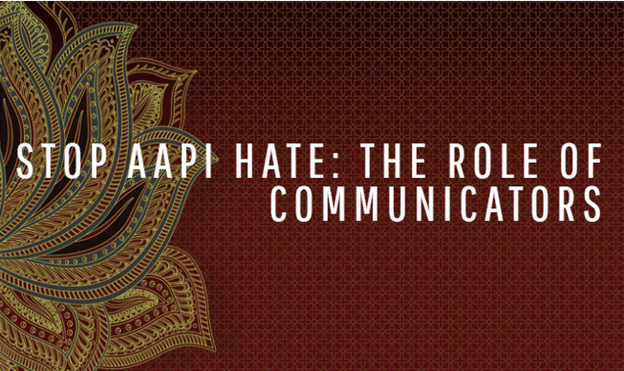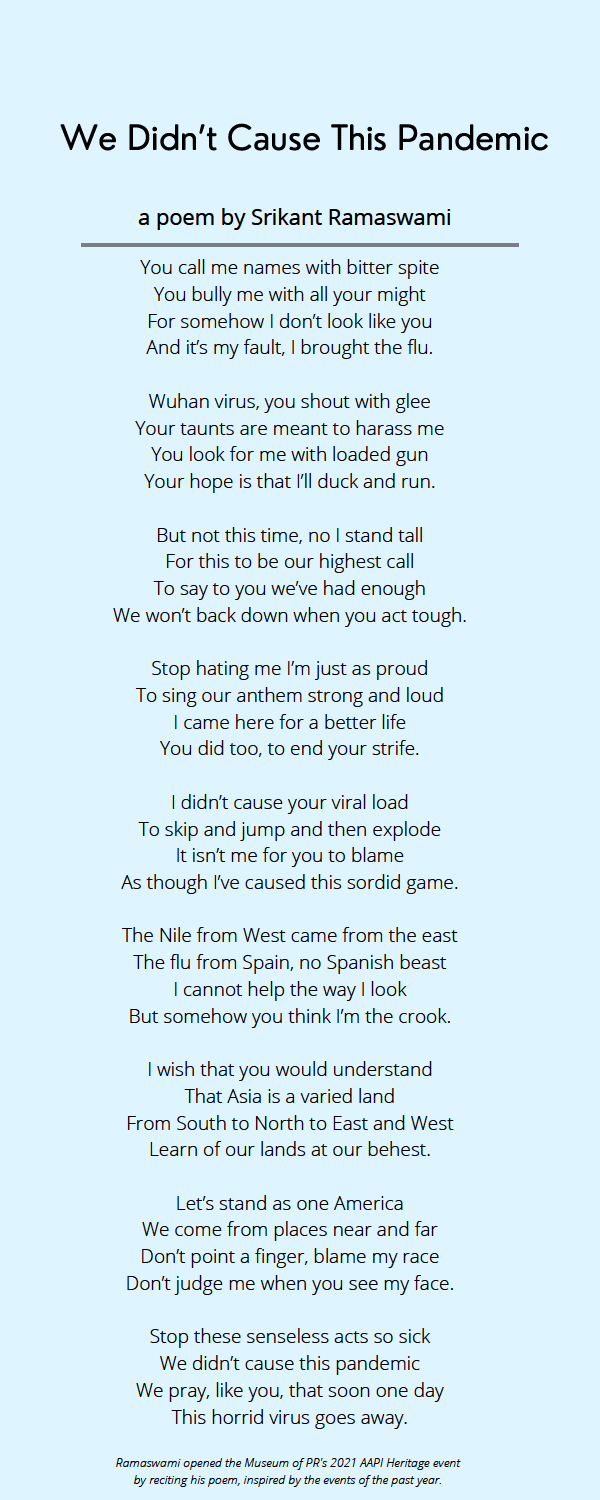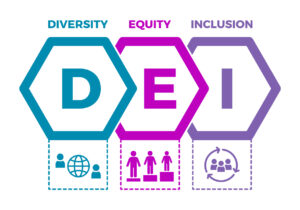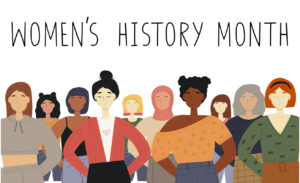How communicators can make a difference in stopping anti-Asian hate
The Museum of Public Relations hosted industry leaders for a discussion of the Asian-American experience in the industry and how comms leaders can make a difference in their communities.

The data on incidents of hate targeting the Asian American and Pacific Islander (AAPI) community tells a stark story about the U.S. in a post-pandemic world.
According to the organization Stop AAPI Hate, the number of reported incidents where the AAPI community was targeted doubled in March of 2021 from 3,795 incidents to 6,603 incidents—fueled by the way the AAPI community has been turned into a scapegoat in the aftermath of the COVID-19 pandemic.
According to the data, which spanned incidents from March 19, 2020, to March 31, 2021, verbal harassment made up the vast majority of reports at 65 percent. Shunning, defined as the “deliberate avoidance of Asian Americans and Pacific Islanders,” was the second most common form of discrimination at 18 percent, while physical assault comprised the third largest category at 13 percent.
In response, many Americans are ready to take action—and there are plenty of advocates within the PR and communications industry who say they have a platform and are prepared to use it to drive change.
Bill Imada, chairman and chief connectivity officer for the IW Group, led a panel for The Museum of Public Relations’ AAPI Heritage Month Event on May 12. The panel took up the question: What can communicators do to help stop AAPI hate?
Imada acknowledges that while many organizations have taken to speaking up on issues of social justice in recent years, a frustratingly large number of companies in the Forune 500 have yet to make a statement about the recent increase in hate incidents targeting the Asian-American community.
Rema Vasan, president for Marina Maher Communications, says that a good place for organizations to start is to “acknowledge that this is an issue in the first place.” It’s a question of awareness, she says, for organizations that are already making an open commitment to stamp out racism. She asks: “How are we being antiracist as a corporate community and supporting the entire diverse community with really tangible actions and support?”
Making the case with data
For organizations that aren’t ready to make statements condemning racism, experts recommend coming to leaders with the data that shows broad support for such action. For example, Porter Novelli has done research that shows 59% Americans say it is no longer acceptable for companies to be silent on social justice issues and a further 49% say they assume companies that remain quiet on social justice issues don’t care.
However, the data also shows that external statements can’t come before any internal reckoning over past behavior and culture, warns Suzy An, a vice president at Porter Novelli and a justice, equity, diversity and inclusion (JEDI) leader.
“Make sure you have your own house in order and your own people are taken care of before making any external statements,” she says.
Porter Novelli’s research also shows that companies that do speak out must follow through with accountability. “Two-thirds (66%) say they appreciate when companies they haven’t heard from before join the dialogue, but 60 percent will hold a company accountable when it makes a statement of support around specific social justice issues,” it writes.
Speaking up and telling stories
One way that Asian-American communicators can make a difference, according to Ted Nguyen, department manager for public communications & media relations with the Orange County Transportation Authority, is to proudly tell your own story. He admits that Asian-Americans can be bashful or afraid to boast when it comes to sharing their own success, but he argues that celebrating the achievement of Asian-Americans is crucial to help elevate their status in organizations and the wider community.
“Representation is so important,” agrees Portner Novelli’s An. This month, Porter Novelli is spotlighting Asian talent on corporate social media channels and investing in mentorship programs and leadership development workshops.
Telling the story of the Asian-American experience is the foundation for any potential change, says May Lee, host and executive producer of “The May Lee Show,” another of the many panelists who spoke Wednesday.
“If we don’t educate… if we don’t inform others about AAPI history and stories, there will be no understanding—and therefore no empathy,” she says. “We as a collective need to do better to know our own history, first—and then share that history.”
The model minority myth
One topic that got lots of attention from the panel was the “model minority myth”—the construct that places Asian-American achievements in contrast to other minorities, while still making them an “other” from the white majority.
To understand the history of the model minority myth, you have to go back to post-WWII era.
“During World War II, the media created the idea that the Japanese were rising up out of the ashes [after being held in incarceration camps] and proving that they had the right cultural stuff,” said Claire Jean Kim, a professor at the University of California, Irvine. “And it was immediately a reflection on black people: Now why weren’t black people making it, but Asians were?”
These arguments falsely conflate anti-Asian racism with anti-black racism, according to Kim. “Racism that Asian-Americans have experienced is not what black people have experienced,” Kim said. …Asians have been barred from entering the U.S. and gaining citizenship and have been sent to incarceration camps, Kim pointed out, but all that is different than the segregation, police brutality and discrimination that African-Americans have endured.
“Through the ages it has worked both ways,” says May Lee, reflecting the complex experience of many Asian-Americans in reckoning with their own racial identity. “On the one hand, it works in our favor because it gets us closer to the gold standard of whiteness. It provides that status and acceptability. But it works against because it pigeon-holes us into this category where we are all…’nice, good citizens’… until COVID-19 hits, until WWII hits.”
To break down this myth and begin to work towards integration and acceptance, the panelists argue that the first step is education and speaking out.
“Candidly, I’m not sure that people outside the AAPI community are aware of the model minority myth,” says Elliot Lum, executive vice president for growth and community with the Association of National Advertisers.
Lee agrees. “How do we break that? We have to break that,” she says.
What allies can do
The panel also recommends that communicators who might feel marginalized speak up and tell their potential white allies about the things they could do to help make them feel more included.
“Everyone wants to be a good ally, says Helen Ames, partner with Finn Partners. “But it’s also up to us to say: ‘Hey, as an ally, here are a couple of things you can do.’”
And organizations can be allies, too. In his keynote address, Srikant Ramaswami, head of U.S. pharma communication for GSK, offers 10 ways that organizations can take action to support the AAPI community:
- Hold focus groups, town halls and informal chats with employees to gain understanding, raise awareness and discuss the consequences of divisive thinking.
- Speak out—vociferously and swiftly—when you see injustice.
- Educate your stakeholders.
- Take time to issue formal statements when needed.
- Do not stay silent.
- Pledge to do more.
- Invite guest lecturers who are experts on discrimination, prejudice and bias.
- Make tangible commitments.
- Support calls to insulate social networks from the views of those who promote supremacy of any kind.
- Support and volunteer with organizations that are actively combatting anti-Asian racism.

Learn more about the latest efforts and tactics to drive DE&I efforts for your organization by joining Ragan’s Diversity, Equity and Inclusion Virtual Conference May 19.







